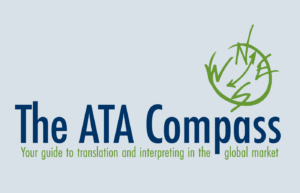Video Translation and Subtitling: The Ins and Outs of “Subs and Dubs”

Thanks to the success of international blockbusters like Parasite and Squid Game (both originally in Korean), video translation and subtitling have now become hot topics. Lots of people are asking whether “subs or dubs” make for a better or worse viewing experience.
There are strong opinions on each side but also some helpful general trends. For example, younger people are more likely to watch TV with subtitles on, even for content in their first language. Viewers in the US and UK prefer subtitles for video translation into English, whereas Western Europeans lean toward dubbing. Ultimately, though, when it comes to the debate over subtitles vs. dubbing, it’s really a personal preference.
Whether for entertainment, educational, or training purposes, both subtitling and dubbing are wonderful for expanding access, and they each have their own requirements. Let’s take a look.
Subtitling vs Dubbing: What’s the Difference?
Subtitling and dubbing are the two main audiovisual translation types. Much like interpreting vs. translation, one is aural and one is visual.
Subtitles are the text translation of the spoken audio that viewers see at the bottom (or top) of the screen.
Dubbing is essentially a voice-over translation. It’s an audio track that replaces the original spoken audio.
Subtitling vs Dubbing: Why Choose One or the Other?
Subtitling and dubbing each have their pros and cons, and the answer is often dependent on what your audience expects and what they’ll follow most easily.
| Subtitling | Dubbing | |
| Pros |
|
|
| Cons |
|
|
This question extends beyond entertainment. Companies are increasingly reaching out to multimedia translation agencies to make their content, such as marketing or training videos, more accessible. Subtitles are often considered more affordable (since you don’t have to then hire a voice actor and produce the audio), but they might leave out anyone who has trouble reading because of their eyesight or educational history. In that case, dubbing videos into the target language is a great solution that meets your target audiences where they’re at, making them feel included and valued.
How Video Translation Works: Subtitling vs. Dubbing
There are some key differences in creating these two audiovisual translation types, including an additional dubbing translation step. It starts with the linguist translating a verbatim source-language transcription (called a dialogue list). Their translation is then adapted into a script for voice actors to record.
Here’s a comparison between the video localization workflows for subtitle and dubbing translation:
| Subtitle Translation | Dubbing Translation | |
| Length/duration | The length and duration of subtitles is limited, so translators must follow parameters dictating characters per line, the number of lines, and reading speed so the text doesn’t disrupt the image and audiences have enough time to read. | The length and duration of a dubbing translation is not limited because dialogue lists are not intended for end-users. Adapters and voice actors will alter the translation to match the visual elements, such as the character’s mouth movements (or lip flaps), in a later step. |
| Level of domestication and/or foreignization | Subtitles are intended for end-users, so translators aim to ensure they make sense in the target culture (a sometimes thankless task). Certain idioms and cultural concepts may be adapted so they aren’t disorienting for the viewer. | Translated dialogue lists tend to be more literal and foreignized to capture a comprehensive picture of the source-language meaning. The transcription and translation often include annotations to help explain things like innuendo, idiomatic phrasing, slang, etc. for the adapter. |
| Role in the overall video production process | A subtitle translation is usually produced after the original content has been finalized so the translated subtitles can be lined up with the audio, shot, changes, and on-screen images. | A dubbing translation is completed during post-production, so there may be several rounds of translation to keep up with edits. This allows adapters and voice actors to quickly get to work on the final dubbing steps, speeding up the overall production process. |
How Video Translation Works: What Happens After Translation?
As mentioned above, a dubbing translation is not actually intended for audiences – the translated dialogue lists are for adapters. That means there’s still one more step in the video localization process before the dubbed product is ready for public consumption. For multimedia translation agencies or other translation professionals offering dubbing or subtitle translation services, understanding this final step is beneficial.
Voice actor Nathalie Frederick, who’s currently working on an animated kids’ series, was kind enough to answer a few questions about what happens to my translations after I hand them off and they’re adapted into scripts.
Q: What’s the actual process of recording a video translation voice-over like?
A: I listen to (and watch) the original first, line by line. Then the sound engineer will beep me in with three beeps that essentially act as a “1-2-3-go”, and I record my English line while watching the original back again to help me match it, often with the original language playing quietly underneath.
Q: So, do you get the script in both languages or just one?
A: It depends on the project. Sometimes, I get the full script in the original language with the English translation underneath each line. This is helpful when it comes to lines where matching the lip flaps is difficult because I can see if the original line is clearly too long or short.
Q: Do you ever have to adjust the script with the engineer to get the best video translation?
A: Sometimes we may have to puzzle over something together when the English really doesn’t match; we’ll cut or add words or make other small adjustments (if we have permission to do so).
Q: Of the languages you’ve dubbed for, did you notice any difference in how the English matches up to the original in terms of the video translation audio?
A: It’s been a while since I’ve worked on anything besides French, but I think Japanese was easier to match. It has more consonant sounds and a staccato rhythm that feels more similar to English. French sometimes feels very quick and runs together like it’s made up of primarily vowels.
Q: Have you ever dubbed for live action? How did that differ from animation?
A: I have, though it was British English to American English. In some ways it was easier, because the words are literally the same. But you absolutely have to be more precise to match a human being versus a cartoon character.
Q: Have you ever come across something that felt like a potential cultural misunderstanding?
A: Oh, all the time. I recently had a line that was translated as, “C’mon, git!” even though it really didn’t make sense for the character. But mostly, when working on kids’ shows, we get a lot of lovely moments about the power of friendship and teamwork, which I think is universal.
Thanks, Nathalie, for letting us peek behind the (sound-dampening) curtain!
Video Translation and Subtitling: Find the Right Pro for Your Subs or Dubs
Whether you’re a millennial who watches everything with subtitles or one of the 60% of Germans who prefer dubbing to subtitles, we can all agree that subtitling and dubbing translation are highly specialized fields that require a lot of cultural knowledge, linguistic creativity, and technical skill. And both serve to help everyone access multimedia in a way that speaks to them. If you’re looking to expand access to your audiovisual content through dubbing or subtitle translation services, you can find professionals to help you do it with ATA’s Language Services Directory. Filter your search for members of the Audiovisual Division to more quickly find the right professional for your multimedia translation needs.
By Olivia C. Caputo
About the Author
 Olivia C. Caputo is a Spanish to English audiovisual translator. She works primarily in subtitling and multimedia accessibility, English copy editing for brands and marketing, and some literary translation on the side. She is also an active volunteer for the American Translators Association. The American Translators Association represents almost 9,000 translators and interpreters in more than 100 countries. To hire a translation or interpreting professional, please visit www.atanet.org/directory.
Olivia C. Caputo is a Spanish to English audiovisual translator. She works primarily in subtitling and multimedia accessibility, English copy editing for brands and marketing, and some literary translation on the side. She is also an active volunteer for the American Translators Association. The American Translators Association represents almost 9,000 translators and interpreters in more than 100 countries. To hire a translation or interpreting professional, please visit www.atanet.org/directory.
Language Services Directory
Subscribe to The ATA Compass
Connect with The ATA Compass
Recent Posts
Why You Should Use a Certified Translator or Interpreter
Choosing a Certified Professional is the Smart Choice A certified translator or interpreter ensures effective, accurate, and culturally sensitive communication that truly bridges the gap between languages and cultures. Accuracy…
Read MoreLanguage Services Directory
Start Your Search ATA’s Language Services Directory includes a list of all ATA members of individuals, as well as companies. Need help finding the right professional? Professional translators and interpreters…
Read MoreBuying Language Services
Guide to Buying Translation Services Translators help power the global economy, working with businesses, governments, non-profits and individuals. Translators work with the written word. The ATA Guide to Buying Translation…
Read MoreWhat is a Certified Translation?
What are the basics of a certified translation? In the United States, anyone can certify a translation. A translator does not need to be certified in order to provide a…
Read MoreMachine Translation
What is machine translation? Machine translation (MT) is the use of automated software that translates text without human involvement. Adaptive MT is a technology that learns and adjusts in real-time…
Read MoreThe ATA Compass
Want to reach more customers, grow your business, and improve your bottom line? The ATA Compass publishes articles and provides resources to show you how language professionals can help you…
Read More






